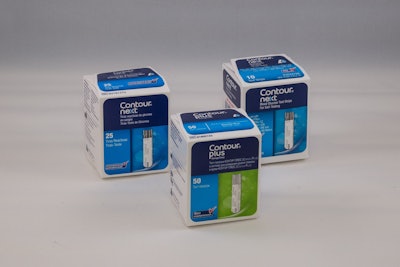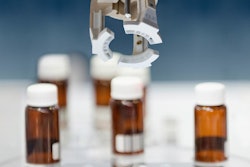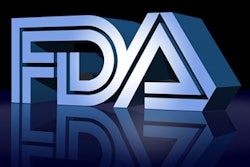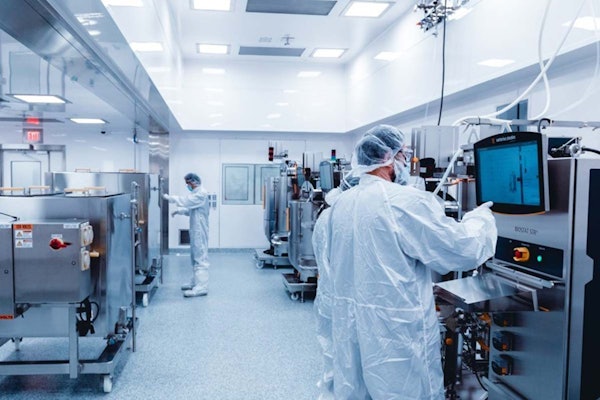Dedicated to improving the health and lives of people with diabetes, Ascensia Diabetes Care is known for its CONTOUR™ range of blood-glucose monitoring systems.
One of the latest Contour products is the Bluetooth-enabled CONTOUR NEXT ONE, which connects the CONTOUR Diabetes app in a smartphone. The app allows the person to track their blood glucose values, and record what they’ve eaten or how they’ve exercised.
Headquartered in Basel, Switzerland, and in Parsippany, NJ in the U.S. Ascensia was created when Bayer AG sold its 70-year-old diabetes care business to PHC Holdings (formerly known as Panasonic Healthcare Holdings) in 2016.
When a company with a new name is formed out of a leading brand, transferring and integrating the huge amount of data involved represents a significant challenge. Yet the exercise can also provide an opportunity to upgrade information management systems in ways that make future product and business decision-making more effective.
That was the experience for Ascensia, which retained many of the former Bayer employees. “We knew the product, it was just handling the transition we needed help with,” says Chris Pasternak, Ascensia’s Manager of Engineering Systems. “When we first launched, we said, ‘Let’s look at this as a very large startup.’ Bayer is a great company with a lot of irons in the fire. Now, for us as Ascensia, to be able to focus solely on the diabetes industry and develop more and better products is very exciting.”
Managing “old” into “new” on a global scale
Yet that excitement was tempered by the need to separate entirely from Bayer’s existing SAP enterprise resource planning (ERP) software system. All relevant legacy data had to be extracted by a certain deadline. New ERP and product lifecycle management (PLM) systems needed to be configured and integrated with each other. And everything required a rebranding from Bayer to Ascensia that would affect multiple products, sold in countries around the world, with customized packaging in many different languages.
“We had both legal and time constraints on getting it done in about 18 months,” Pasternak notes.
To better understand the complexity of the groundwork involved in the project, consider a single Ascensia blood-glucose monitor: the compact, hand-held device comes individually packaged and is shipped in large lots. Accompanying supplies include the lancets for the finger-stick that draws the patient’s blood, and the test strips that go into the meter to register blood-sugar levels.
Ascensia packages digital monitors, needles and test strips at locations worldwide. Retail meter kit products are typically sold in paperboard cartons that contain clear plastic bags that hold needles or test strips. Further packaging details were not available.
Once Ascensia was created, the company had to start the process to replace all existing blood-glucose monitors and associated hardware that included the Bayer name and branding with versions bearing the new company logo, as well as redesign artwork, labeling and packaging.
Designs, marketing plans and manufacturing guidelines all needed to be created, approved and executed by the agreed deadline for removing all Bayer branding.
“Every component that went into every country had to be touched,” says Pasternak. “Even the needles on our lancets had to be redesigned because they all had the Bayer cross emblem on them. Back when we were Bayer we wanted to make sure that brand was on everything—but in this new situation it had to come off everything.”
To manage the project from both a product and a financial system standpoint, Ascensia had to process a massive number of change orders to track all the redesign work, produce and distribute all the new product versions to their proper destinations, and keep the overall task flow of the business running smoothly throughout.
What’s more, as a medical device manufacturer, Ascensia had to ensure continual compliance with strict FDA and ISO requirements as all these transformations unfolded. “Everything we do, from changing passwords to how we control and store our data is regulated,” says Pasternak. “We have to provide proof that we are following very detailed processes.”
Behind the transition: ERP, CRM and PLM software tools
For tools to help manage a project of such scope, Ascensia turned to Capgemini, a global consulting, technology services and digital transformation firm. Capgemini recommended the NetSuite cloud-based software-as-a-service (SaaS) ERP system with particular focus on the business applications of supply chain management and procurement. Capgemini also provided customer relationship management (CRM) software.
PLM software was recommended as well—something the Ascensia team had not been using when they were Bayer—to serve as the system of record for everything involved in managing the development, production and assembly of its products. Ascensia considered four different tools and decided on Autodesk’s cloud-based Fusion Lifecycle. “Fusion Lifecycle just stood out to us from both a price point and a feature point,” says Pasternak, “most notably for its strengths in bill-of-materials (BoM) and change management.”
After one Fusion Lifecycle provider stepped away from the project several months in due to the size and complexity of the challenge, both Capgemini and Autodesk recommended the implementation services provider Razorleaf to support configuration and integration of the PLM system.
Ascensia, Capgemini and Razorleaf worked closely together on the transition over the next year. “Despite the late start and the size of the project, Razorleaf and Capgemini helped us handle it all, within regulatory obligations, and we were done ahead of schedule,” says Pasternak.
Capgemini Work Stream Project Manager Janie Gurley explains, “A key piece was that legacy information; we needed to take decades of information out of SAP at Bayer and it was a huge win to be able to migrate all that information over into Ascensia’s current environment instead of setting it aside.”
A mission shared by many
The energy at Ascensia is palpable as their new data- and information-management systems make running their business more efficient and give them wider bandwidth for product innovation.
Says Pasternak: “A lot of us who work for this company have diabetes, so we are really motivated to help others like us. Diabetes is on the rise worldwide. We’re designing our products to help people get motivated to monitor their own data and adjust what they’re doing to manage the disease.”
ECOs up, cycle times down
Improved business metrics became apparent very quickly: “In the first two months of the new system we were able to put out about 20% more ECOs [engineering change orders] and our cycle times were reduced by close to 20% as well,” says Pasternak. “By processing ECOs faster we can get to market quicker. We’ve now wrapped up our rebranding efforts and are moving onto our next project.”
Things are running more smoothly on many other levels as well. “The learning curve for staff is much less steep and a lot of that is due to the way Fusion Lifecycle works,” he notes. “Things are more on the surface, so you don’t have to dig through 10 different areas to find what you need. Our coordinators love using it and novice users don’t need to ask for help every time; once we show them how to set up the filters they can find whatever they need in two or three mouse clicks without having to call for help.”
Reporting is also vastly improved with the new PLM system. “Before, we’d spend a day building an Excel spreadsheet that was nearly out of date by the time we published it the next day,” says Pasternak. “Now we can build and publish an intricate report quickly and whoever needs the information can grab all the real-time data immediately.”
Having the entire system web-enabled on the cloud (protected by Autodesk’s dedicated, secure portal) is another benefit Pasternak enjoys. “I can access it from anywhere, collaborate with colleagues while traveling, and if anything crashes that’s system-based, Autodesk fixes it quickly, remotely.”
Of course, the FDA is never far from any medical device manufacturer’s mind and Ascensia is no exception. “We are very well regulated, whether it be the FDA here in the U.S. or other regulatory governing bodies in different countries,” says Pasternak. “The new system allows us to prove we’re adhering to all of our process requirements and maintain the tight compliance we need.”
Supply chain weighs in on the rebranding
Ascensia’s supply chain department was deeply imbedded in the transition from Bayer. Matt Holzherr, the company’s Demand and Distribution Manager, U.S. and Mexico, calls it “a huge undertaking.” Below, he shares some insights about the new ERP and PLM systems:
• Because we do a fair amount of toll manufacturing—where we provide raw material to a third party that provides manufacturing services and returns the finished good to us—we decided to move to a “mini-BoM” setup in NetSuite where the BoM that would integrate over would be only Ascensia-owned cost-relevant inventory components. The win for us is a reduction in our ERP master-date setup time. We can also bring changes into production in a more efficient manner, freeing up resources to focus on the engineering changes at hand.
• With Fusion Lifecycle PLM we wanted to customize as little as possible, to try to use the software out-of-the-box, but also to make sure the PLM we’re putting in place is scalable and can be used in the future without breaking it. Razorleaf really brought that to us in their final delivery.
• The Fusion Lifecycle organized and user-friendly. I can quickly go to an engineering change and pull up what items are affected, what stages it’s gone through, who’s approved what, when, and where it’s sitting right now in our entire process. I’m a big SAP proponent but I really do enjoy Fusion Lifecycle for change management over it; it’s a very strong, well put-together tool.”
• Before, we lacked the ability to create a pipeline of changes for a product with staggered implementation dates, which meant we used to have to issue multiple SMOs [special manufacturing orders]. Now we can manage sequential changes easily, which takes a huge risk off material waste. We must be compliant with FDA and ISO regulations and that rigidity would put a strain on supply, quality and engineering. This new setup provides us with an efficient way of managing that complexity.























